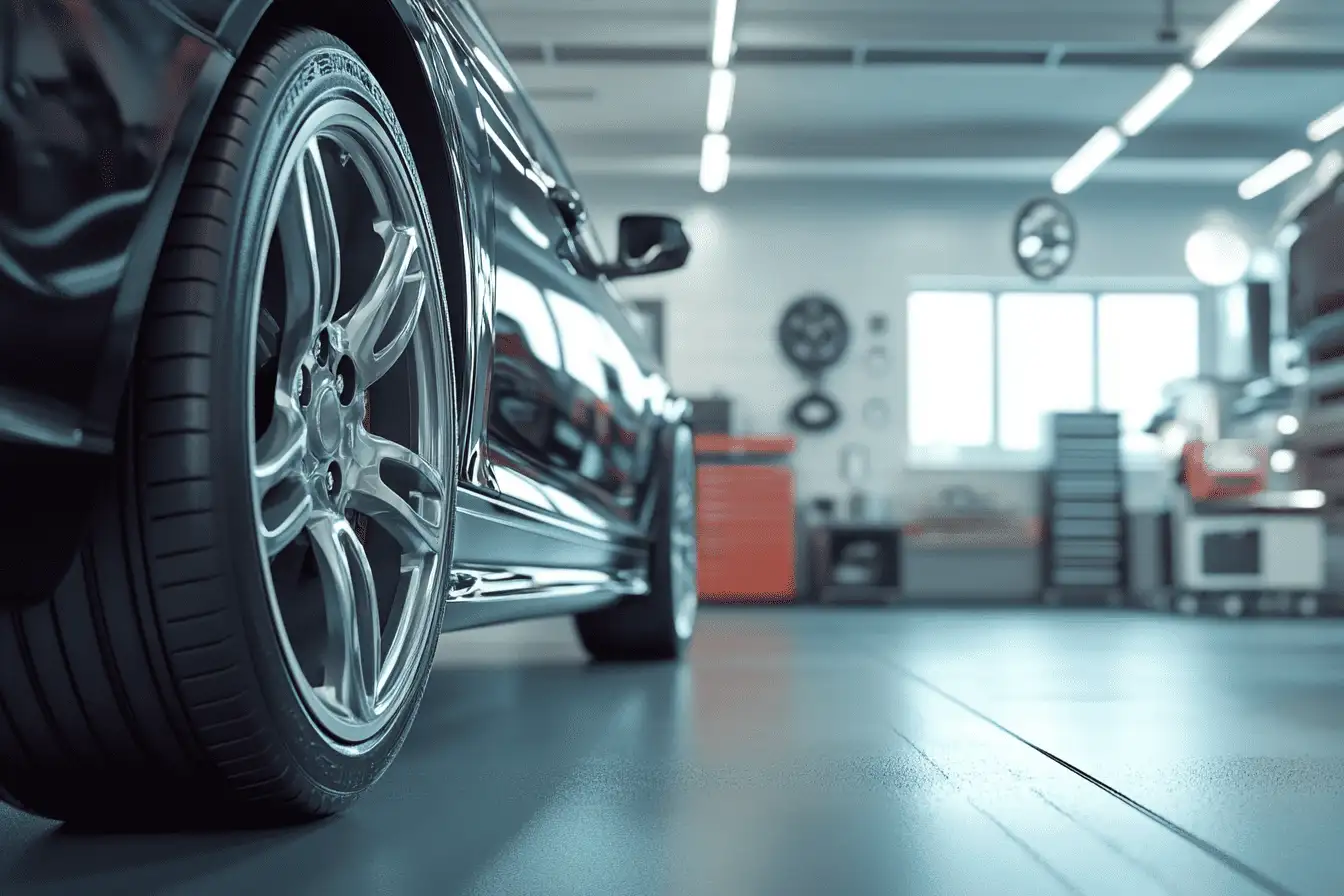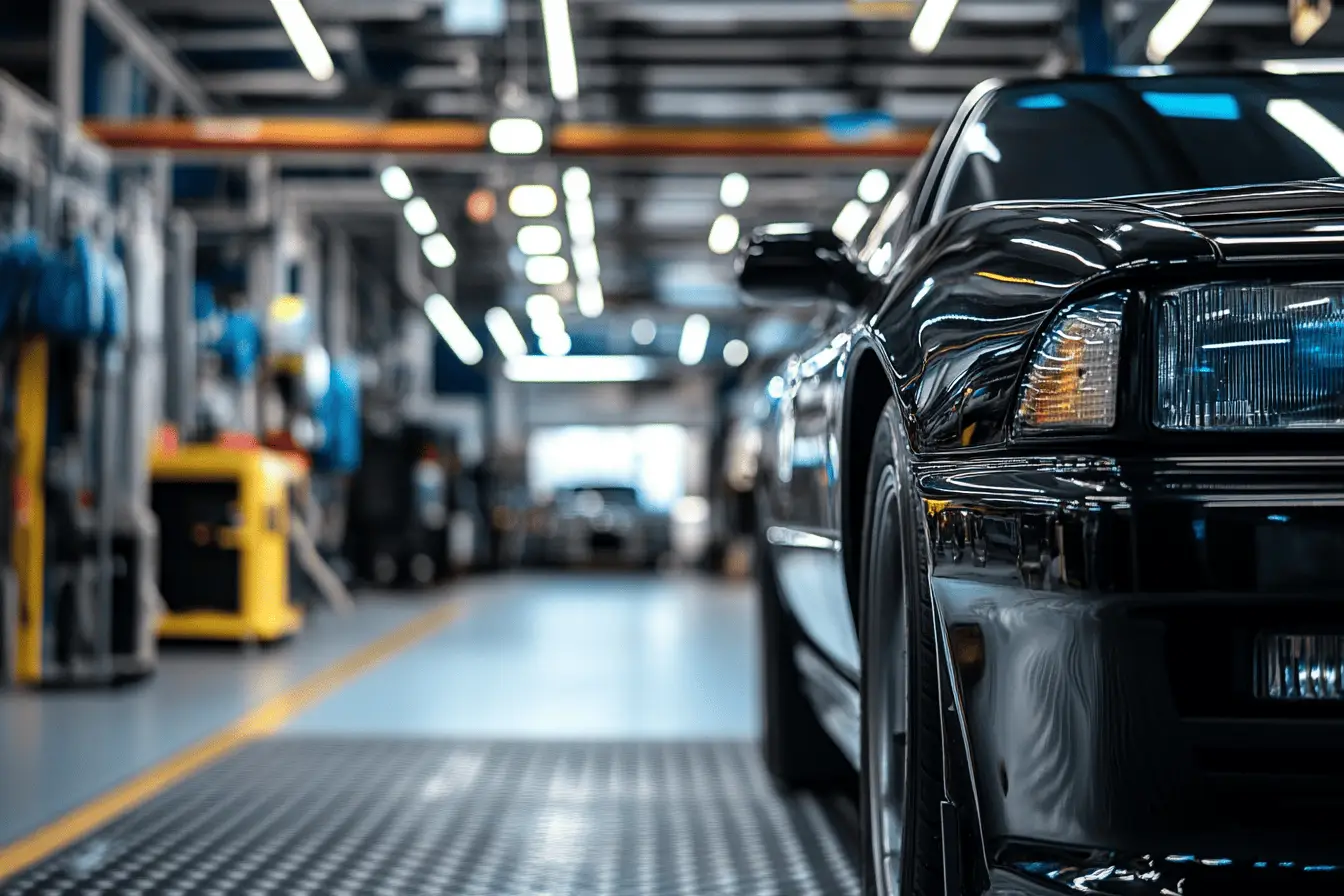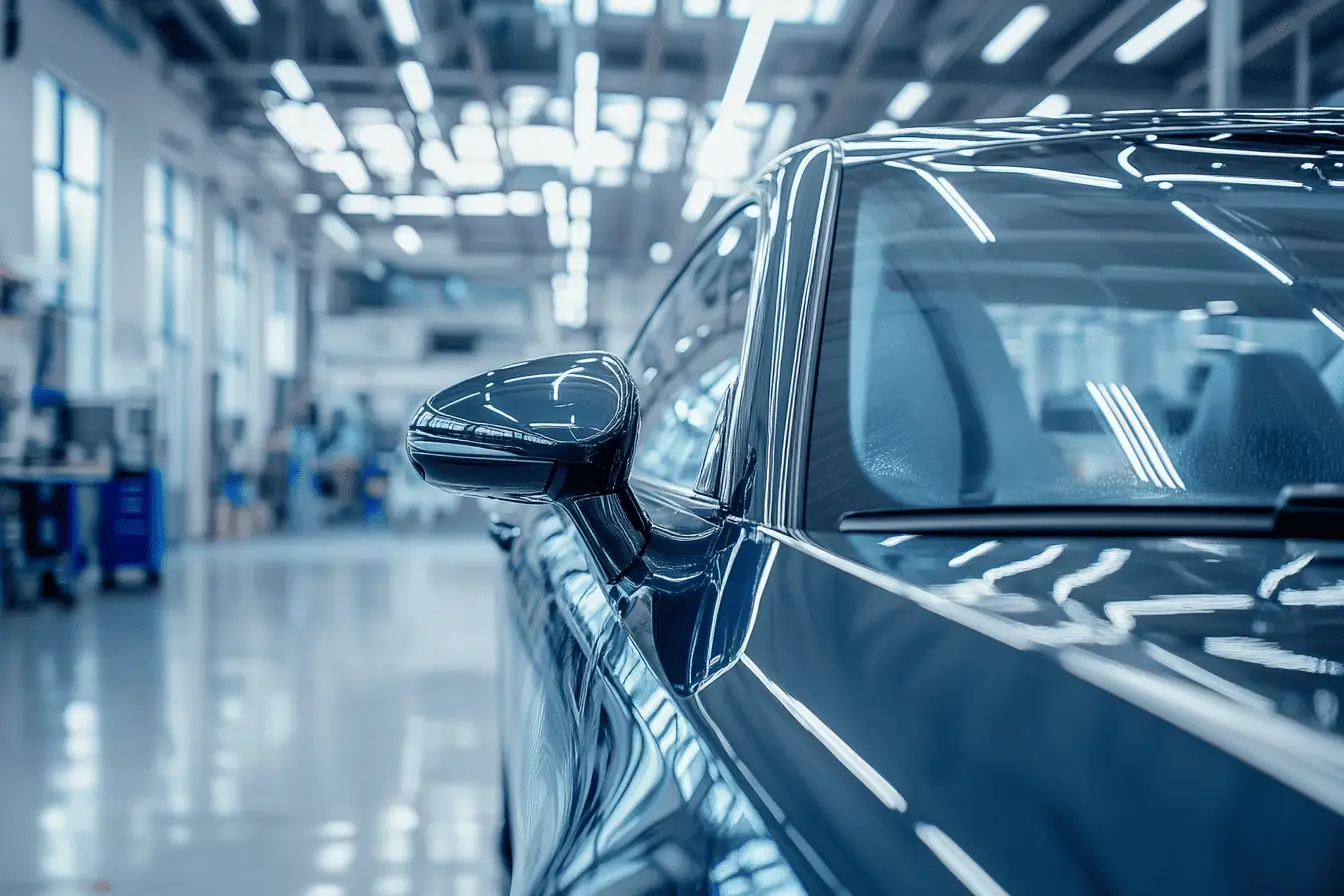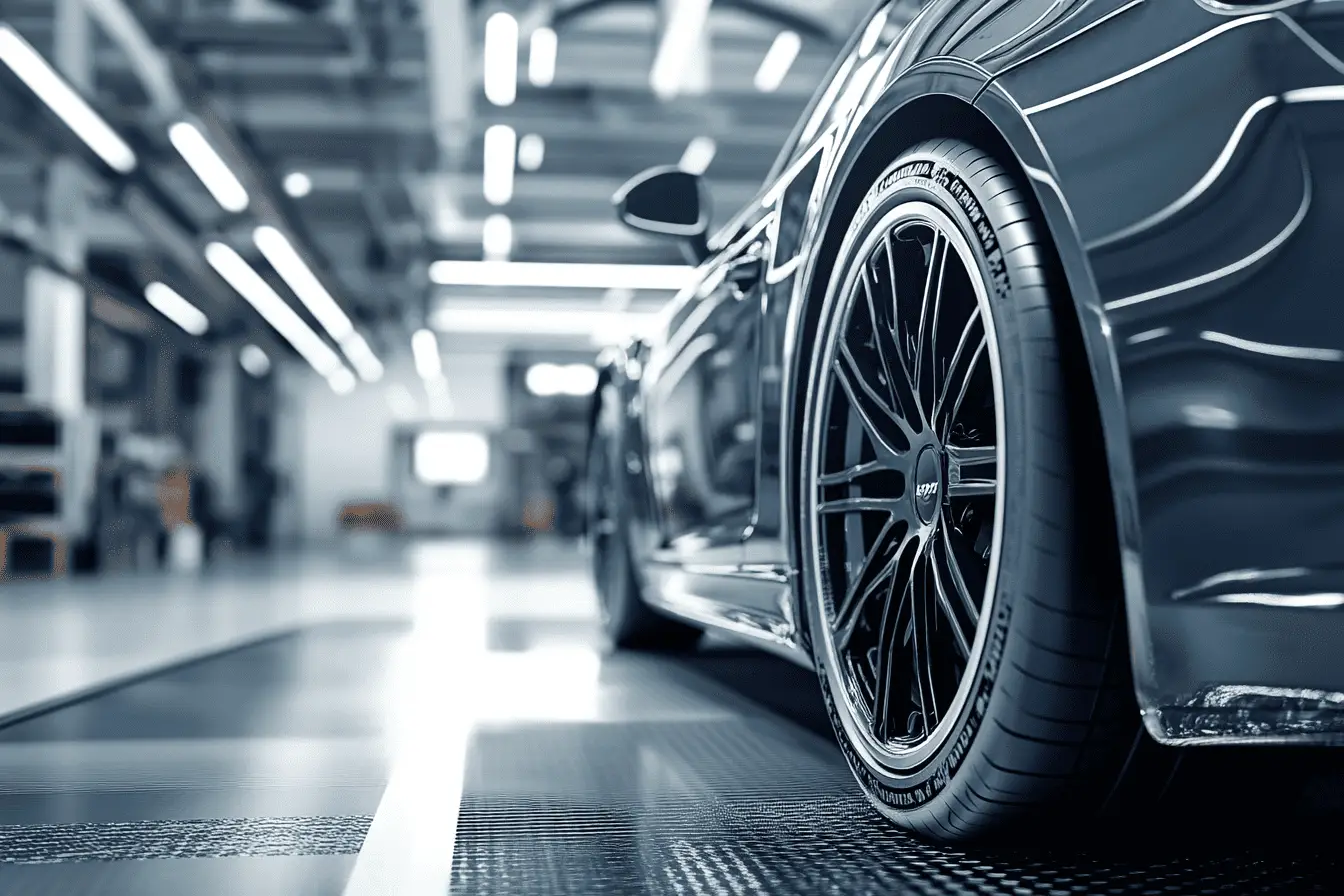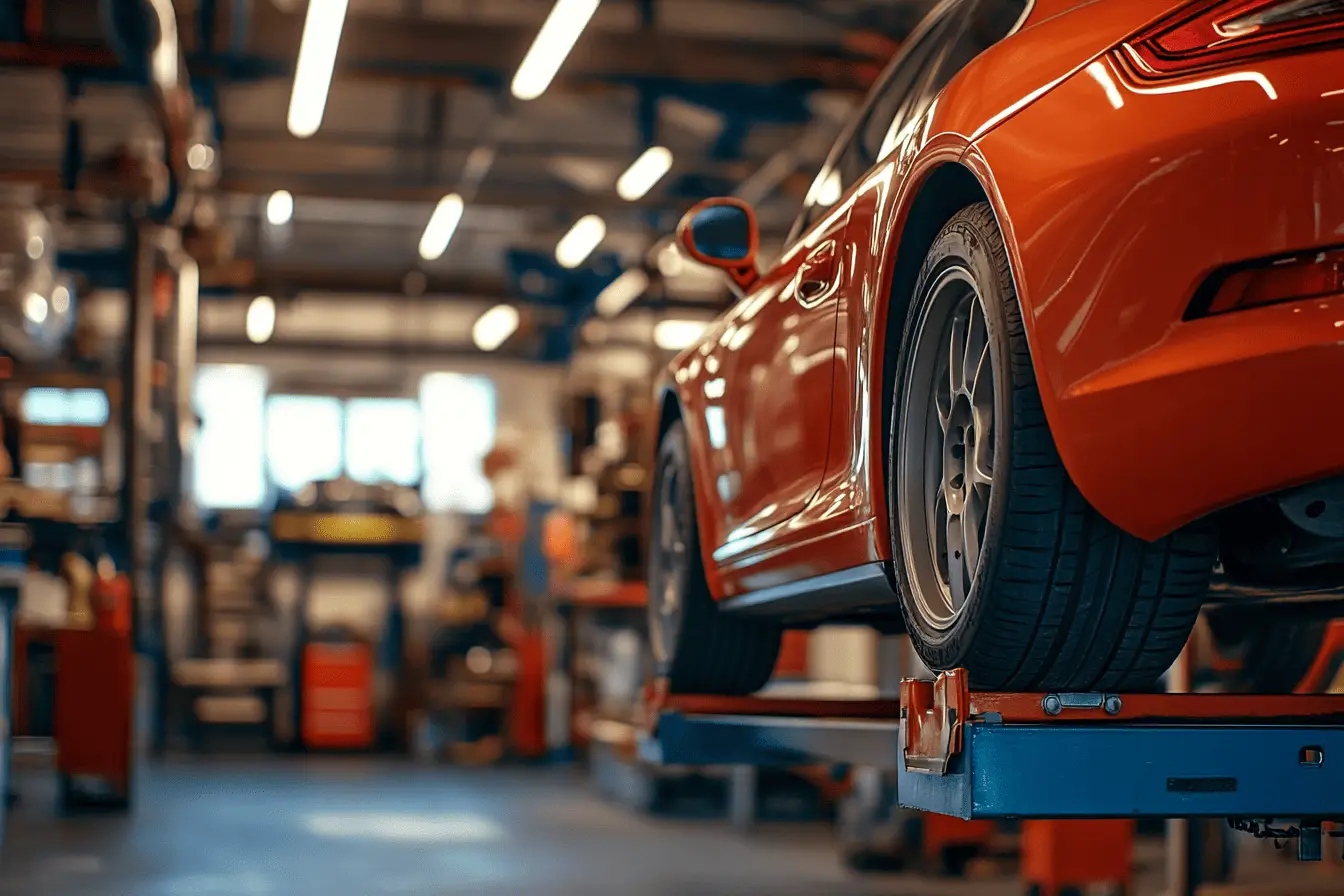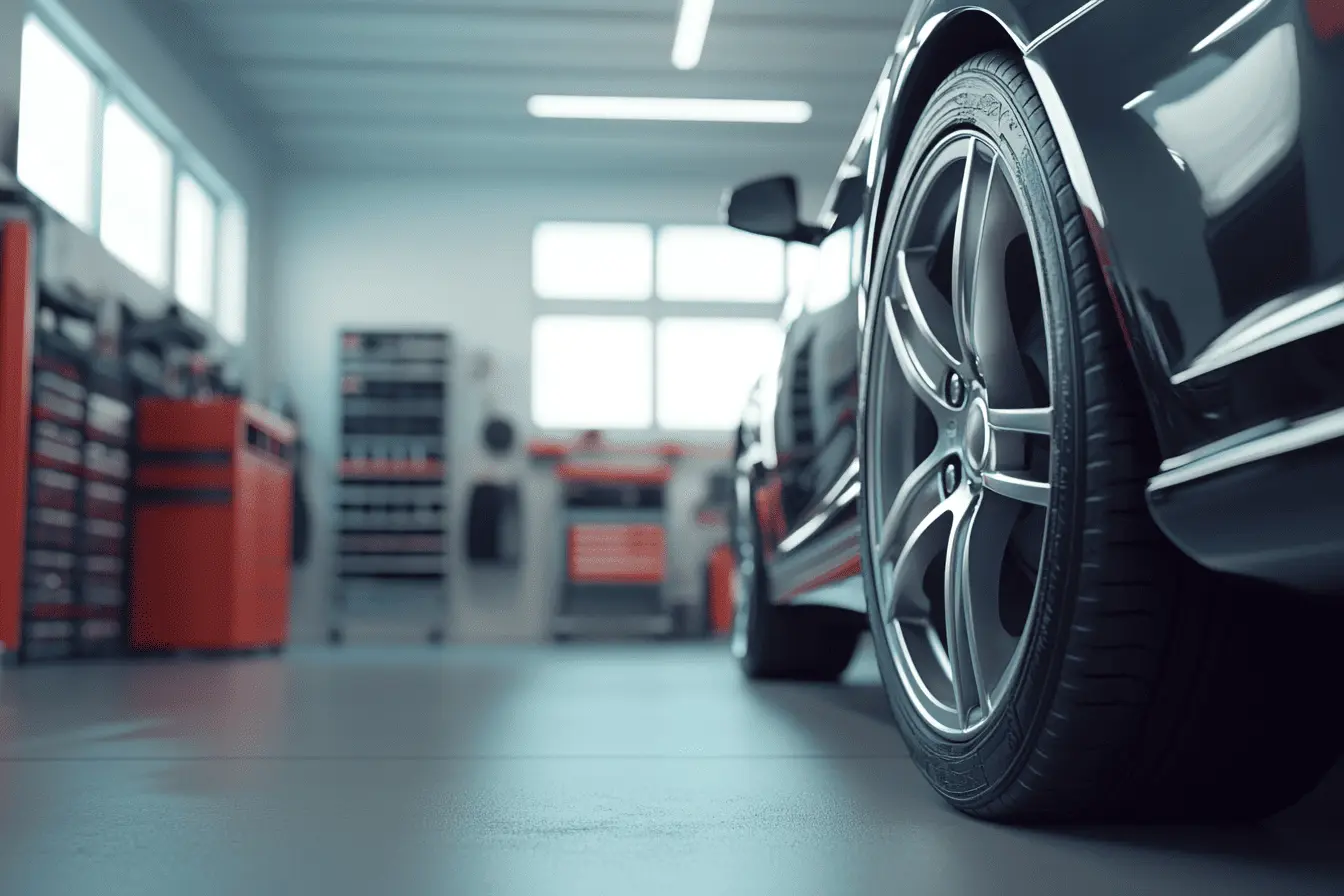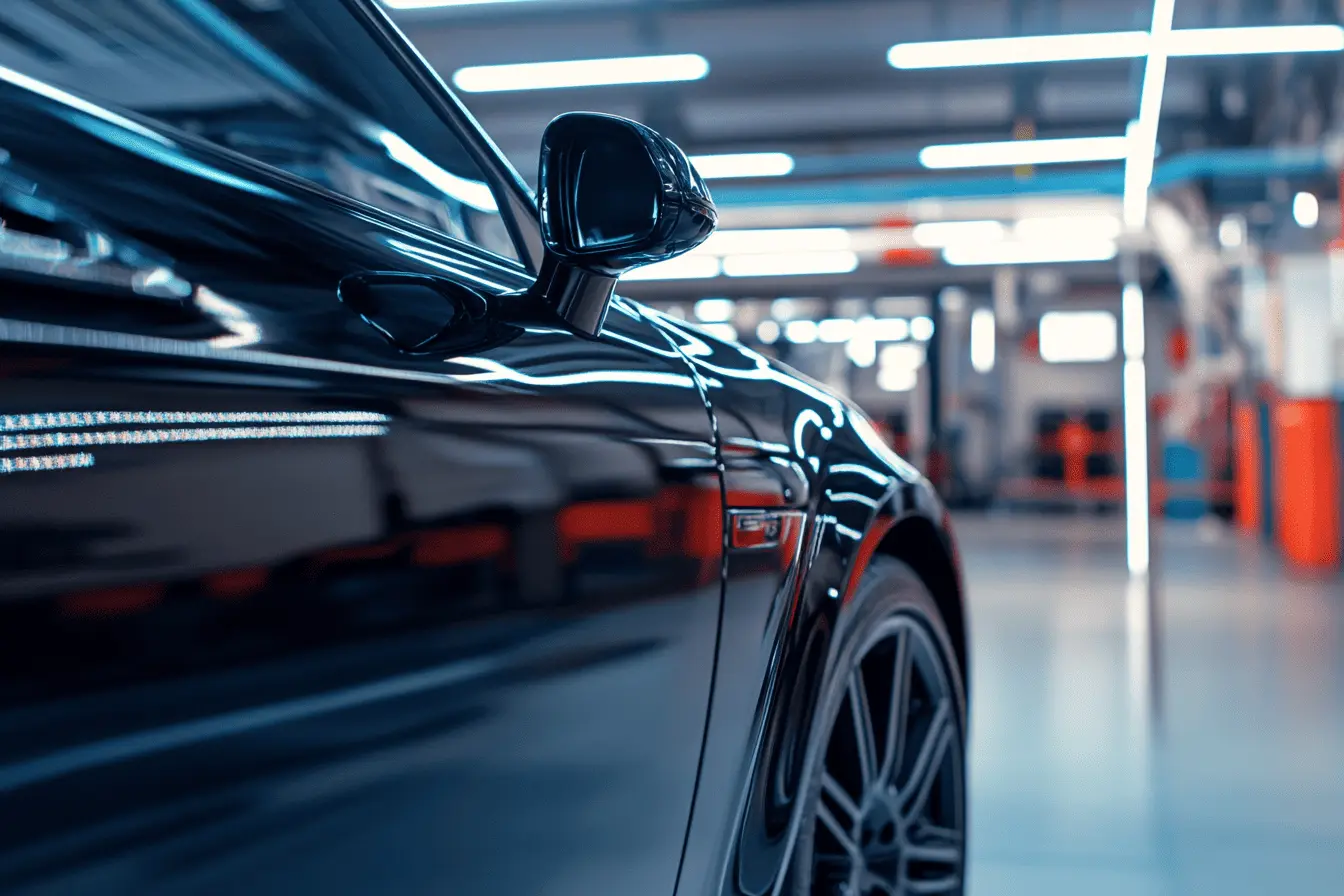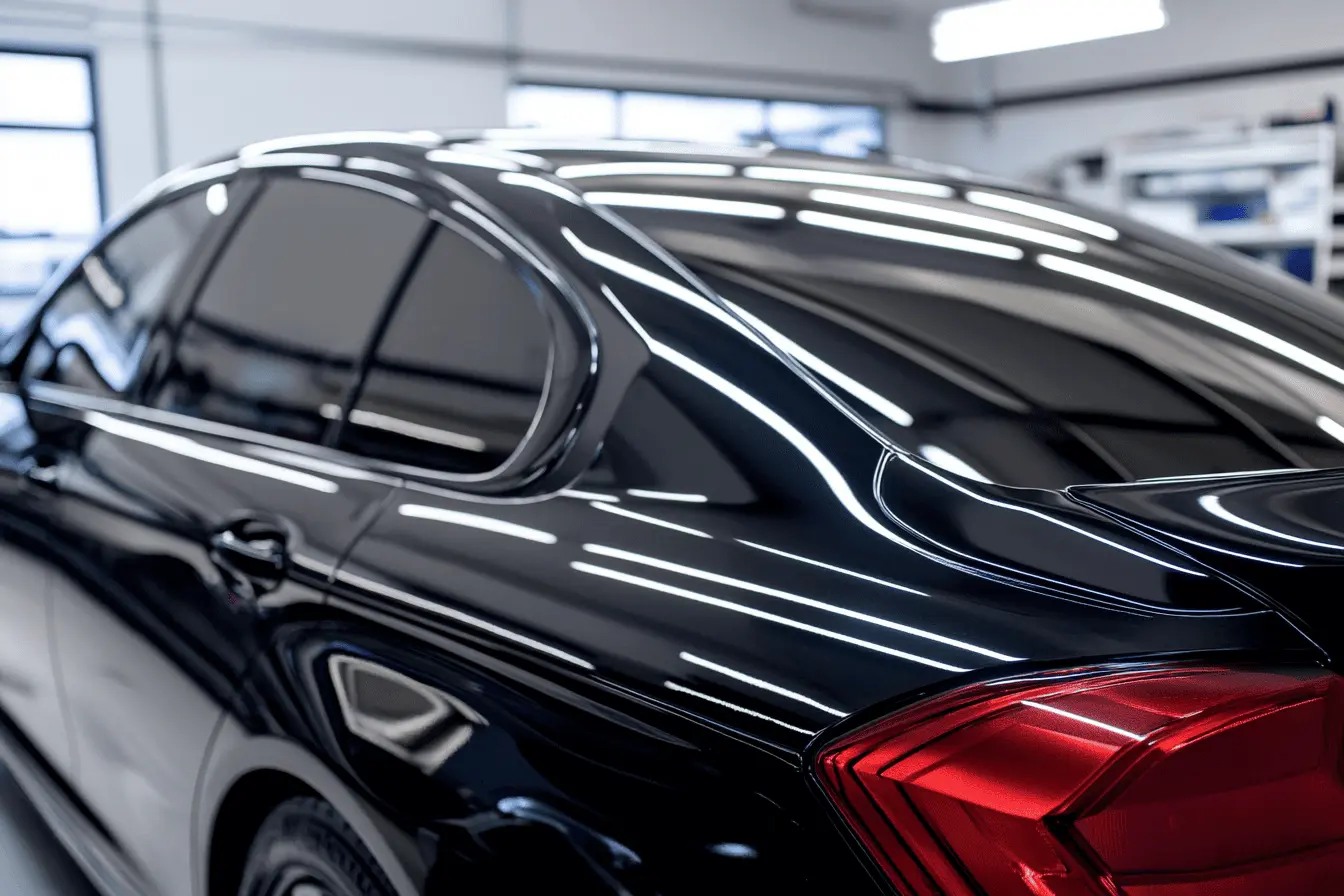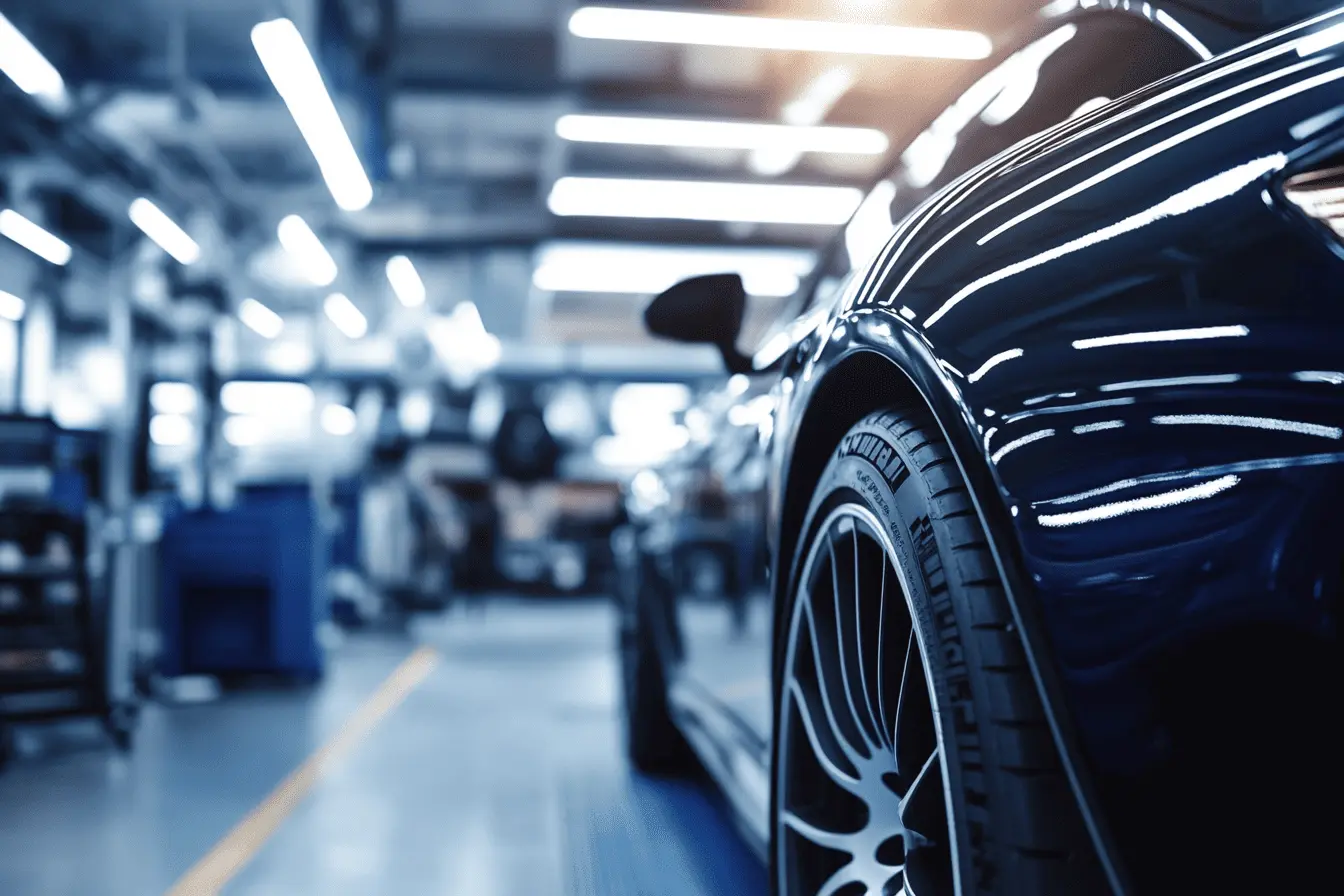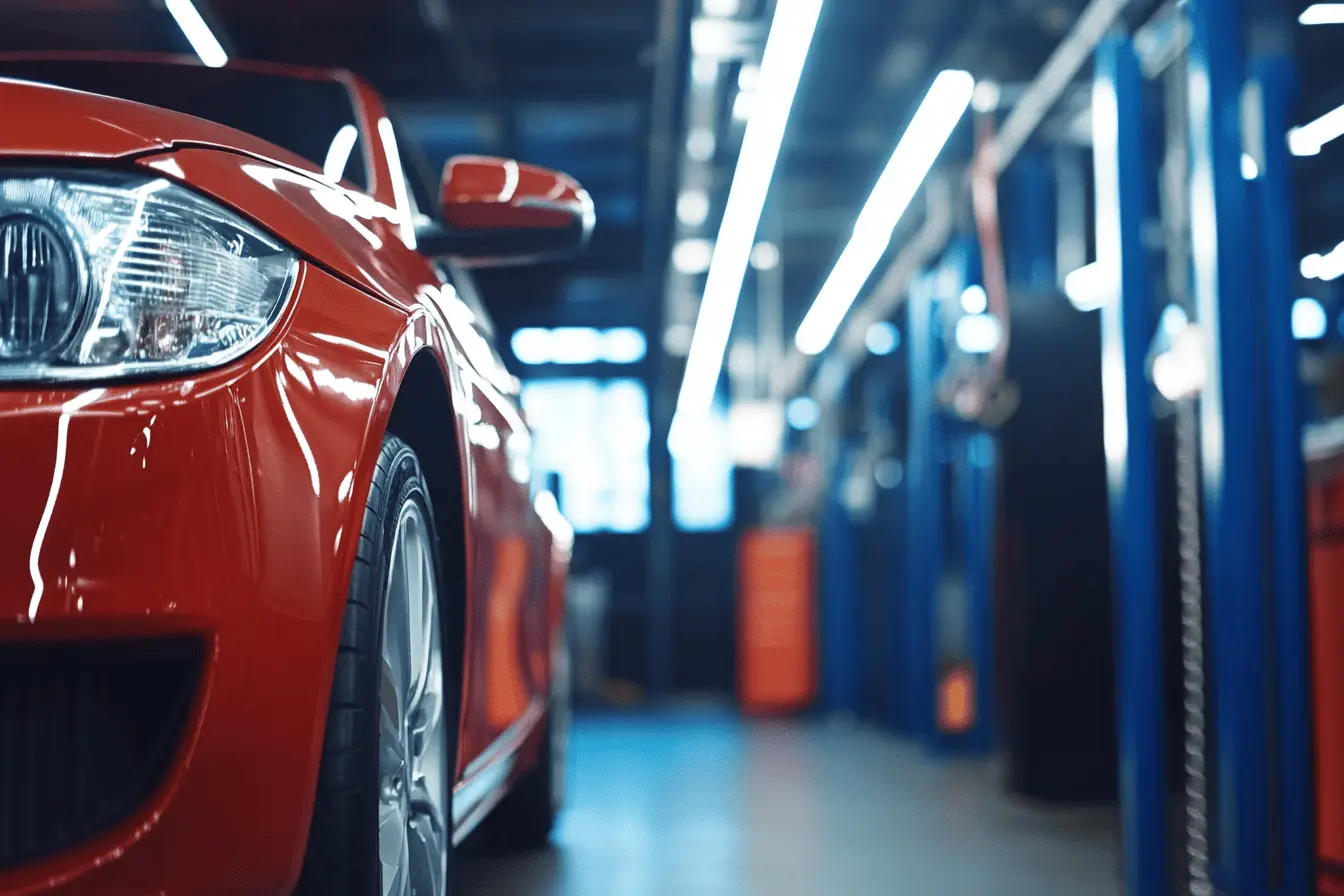
Find out here how much clutch replacement costs in the UK. What are common symptoms and what causes a clutch to slip or go bad? When do I need to replace the clutch? Plus: Where to get free estimates and how to save money.
How much does it cost to replace a clutch in the UK?
ON AVERAGE: £500 – £1,500
The cost for clutch replacement depends very much on the car model. The average cost is £500 – £1,500 in the UK, but the price range can be from £250 – £2,000. The cost of materials for the clutch kit usually ranges from £150 – £500 and the clutch kit consists of clutch driver plate, clutch pressure plate and clutch release bearing.
To this should be added the cost of hydraulic fluid, oil and small parts for about £50 – £100. Additional costs may arise from subsequent damage to adjacent parts. However, the car mechanic can only reliably diagnose these when the car is dismantled. It can also be useful to replace flywheel and clutch together (+ additional £250 – £400) in order to save labour costs.
The major part of costs during clutch replacement is caused by the amount of work involved. Workshops normally charge between £50 – £200 per hour. For most vehicles, changing the clutch takes 3 – 5 hours. On average the labour cost is around £300 – £900.
Average clutch replacement cost in UK | |
|---|---|
Overview | Cost |
Clutch kit | £150 – £500 |
Oil, liquids, small parts | £50 – £100 |
Labour cost, 3-5 hours | £300 – £900 |
Total cost | £500 – £1,500 |
Get Free Instant Quotes From Garages In Your Area!
Clutch replacement prices vary between garages, regions and cars
The costs not only vary greatly by car model, but also between garages and the region you are located in. London prices are always a bit higher than in the rest of the UK.
Rear-wheel drive cars are also often cheaper than front-wheel drive cars, as the clutch is more easily accessible. This makes the clutch replacement costs at BMW, for example, comparatively low. Below are some examples of clutch replacement costs.
All figures are estimates incl. VAT and of course may vary. The prices can also vary a lot even within one model and its versions and years. For a more exact price for your model and area you live in, you can use the free price comparison.
Cost examples for clutch replacement
Audi A4 | from £650 |
|---|---|
BMW 3 (E91) | from £450 |
Ford Fiesta | from £450 |
Ford Focus | from £500 |
Ford Ka | from £450 |
Mazda 3 | from £550 |
Mini Cooper | from £500 |
Mercedes A 150 | from £750 |
VW Golf | from £500 |
VW Polo | from £500 |
VW Passat | from £550 |
|---|---|
Vauxhall Astra | from £650 |
Vauxhall Corsa | from £600 |
Renault Twingo | from £400 |
Renault Megane | from £550 |
Skoda Octavia | from £800 |
Toyota Rav4 | from £600 |
Toyota Yaris | from £550 |
Peugeot 206 | from £500 |
Peugeot 207 | from £500 |
How does a clutch work?
Almost all newer car models have a five-speed transmission. Depending on the speed, the appropriate gear is engaged. In order for the gearshift to work, the driver needs a clutch. Put simply, a clutch consists of two discs. One disc is attached to the transmission shaft, the other to the engine flywheel.
When activated, both discs press against each other with strong pressure. This allows the engine’s power to reach the wheels via the gearbox. When the clutch pedal is then pressed, the two discs are separated by a hydraulic system, and a new gear can now be engaged in the transmission. Clutching to a pedal ensures a pleasant and slow start by slowly bringing the two discs together and transmitting only part of the power.
What are the different clutch types?
Various gearboxes have become established, such as the double-shift gearbox (DSG), the automatic gearbox or the manual gearbox. Although there are also clutches in the DSG range, the main focus here is on the conventional dry clutch in manual shift transmissions. The DSG gearbox has replaced the hydraulic torque converter that has long been common in automatic transmissions.
What does a clutch kit consist of?
The clutch thus consists of three components:
» The cut-off wheel with the lining
» The automatic disc with metal running surface and centrally tapered springs
» The release bearing, which presses on the leaf springs
5 signs and symptoms of a faulty clutch
A clutch is a wearing part that usually does not stop working overnight. There are always signs of damage and wear on the clutch, which can be perceived as warning signals. For this reason you should be particularly attentive to some signals and in such cases have your clutch checked by a specialist or a specialist garage.
You can tell whether your clutch is defective by the following 5 signs:
5. Noise when the clutch is engaged or disengaged
Mechanical noises and rough gear changes are signs that the clutch no longer separates properly.
For your own safety and to avoid subsequent damage, it is absolutely necessary to go to the garage in the event of these signs (especially in the case of a slipping clutch). But in order to get final clarity, the cause of the defect can also be checked by yourself. Testing the clutch can provide clarity within a short time.
Function test: How to find out if your clutch is faulty or not
1. The vehicle must be placed on a level surface
2. There should be sufficient space around the vehicle and other road users must not be impaired. Tip: Empty parking spaces or large yards are well suited.
3. Apply the handbrake firmly.
4. Take the gear out – the vehicle is now in neutral.
5. Start the engine.
6. Engage the highest gear.
7. Step on the accelerator pedal.
8. Did your engine stop?
If the motor stopped after step 7, the clutch is OK. There is no indication that replacement is necessary or that the clutch is defective.
Possible damages: What happens if a clutch goes bad?
Since a clutch is ultimately a wearing part, the most common cause of problems is a worn clutch lining. The only solution is to replace it with a new clutch set. Nevertheless, the above-mentioned symptoms can also be caused by other defects on the clutch. The following are some of the possible causes:
» Defects in the mechanical or hydraulic operation
» Problems on the pressure plate, needle bearing, torsion spring or toothing
» Problems at master cylinder (at the pedal) or slave cylinder (at the transmission) a defect of the release bearing
What causes a clutch to go bad?
» Clutch pedal not fully pressed
» Dwell on the clutch during short stops instead of putting the gear in neutral
» Permanent pressing while driving
» Allow unnecessary grinding during gear changes
» Unnecessary cargo and therefore weight on board
» Get into the next gear when shifting
» Shift down over two gears
Slipping clutch: Meaning, symptoms and causes
What does a slippling clutch mean? And how do I know if my clutch is slipping?
Many car owners ask themselves this when the vehicle shifts exceptionally badly. If the clutch no longer grips properly, but lets most of the movement of the individual parts slip, it no longer transmits the power of the engine properly. This symptom is one of the clearest signs that there is a defect in the clutch system. This is referred to as a slipping clutch.
Especially on the motorway this can have devastating consequences. When driving and accelerating up to full speed a clutch does not grip properly anymore. The newly engaged gear cannot perform its duty.
Especially during overtaking manoeuvres this can lead to shock moments and become a danger. If this weak power transmission occurs, however, slipping of the clutch may have been noticeable as soon as the car starts up.
What causes a clutch to slip?
A frequent cause of slippage is the weak contact pressure between the friction lining of the clutch disc and the friction surfaces. The lower this pressure is, the more the clutch slips. However, the problem of slipping clutches is manifold. It can happen that the clutch of a vehicle slips – but only at high speeds.
Other drivers complain that their clutch slips when the engine is cold, when starting off or in first gear. Another says that his clutch slips after a chip tuning. The causes are as varied as the symptoms. If the clutch slips, there can be various reasons.
Apart from the pressure plate and the clutch disc, the release system is often the cause. Other causes can be an incorrectly reworked flywheel or the installation of an incorrect clutch.
Can I drive with a faulty or slipping clutch?
» Visit the garage promptly!
In general it is not safe to drive with a faulty or slipping clutch. In city traffic, where you only need low gears, it may still be able to go along for a while. However, if it is already slipping in 2nd or 3rd gear it is a bit of a problem. Normally a clutch starts to slip in the highest gear and full throttle, because the clutch has to transfer the highest torque.
You notice this when the engine speed goes up without the speed increasing accordingly. If you were to drive a few kilometres in this state of operation, the clutch would heat up enormously, with possible consequential damage. Especially high speeds and driving on the motorway are therefore not recommended. The best and safest thing is to go to a garage as soon as possible.
How long does a clutch last?
» On average: 80,000 – 120,000 km (about 50,000 – 74,000 miles)
A clutch does not have any fixed interval in which it must be changed, as is the case with a toothed belt, for example. It is regarded as a wearing part whose replacement interval depends heavily on the driver’s operation. The driver’s own driving style therefore has a major influence on the period of time at which the clutch needs to be replaced.
If the pedal is held at the so-called grinding point for a long time during shifting, a particularly large amount of abrasion can occur. As a result, the clutch slips after a certain amount of time, as the power of the engine can no longer be transmitted even when the clutch is in the rest position. As a rule, the clutch components are robust and have a long service life.
However, poor driving can mean that the wear on the clutch is so severe that it has to be replaced after only about 60,000 km (about 37,000 miles). On the other hand, with a gentle driving style, intervals of over 120,000 km (about 74,000 miles) can be achieved. More about this in the next section.
How to extend the lifetime of your clutch
» Do not let the clutch slip too long when changing gear.
» Use the clutch as sensitively as possible and take your foot off the pedal even in stop-and-go traffic to protect the release bearing.
» Do not take your foot off the accelerator when changing gears.
» Do not skip any gears when shifting down this point (it is not necessary for experienced intermediate throttle drivers).
» Unnecessary gear changes should be avoided by driving with foresight.
» Do not overload the car – additional weight also puts a strain on the clutch.
How long does the garage need for clutch replacement?
» On average: 3 – 5 hours
The time needed for a clutch change depends on the car model. In most cases a duration of 3 – 5 hours can be expected. In the best case the change is completed after 2.5 hours. In rear-wheel drive cars, such as many BMW cars, the clutch is changed much faster than in front-wheel drive cars.
This is due to the fact that in most rear-wheel drive vehicles the engine is installed lengthwise and allows good and easy access to the gearbox. With a transversely installed engine, some parts must first be removed to dismantle the gearbox and replace the clutch. In the worst case the replacement can take up to 12 hours.
What happens during clutch replacement?
To simplify matters, we assume in the following that the worn clutch lining is the cause of the problem. In order to change the clutch, the vehicle must be lifted onto a lifting platform. As the clutch is located between the engine and the gearbox, depending on the model, various components have to be removed for replacement.
These include the battery, the engine cover, the clutch cylinder, the starter, the drive shafts and the gearbox. At VW, for example, it is often necessary to lower or remove the power unit carrier so that the gearbox can be removed. Most of the time is spent on the work around it. Once the gearbox is removed, the actual replacement of the clutch kit does not take much time.
Due to the increased wear, it can also happen with a worn clutch lining that the single or dual mass flywheel or the central release also have to be replaced. In addition, the clutch release bearing and clutch pressure plate are generally also replaced as part of the routine.
Can I change the clutch myself?
» Really only for pros!
With this challenging and extensive repair, a lot can go wrong. Therefore you should not renew the clutch yourself. Mistakes are often only noticed after everything has been reinstalled. Then you have to start from scratch and with bad luck you have damaged other parts.
The expert has the necessary know-how and the right tools to ensure that the clutch fits exactly after the repair and that all parts are properly reassembled. Some models require handling with brake fluid. This is extremely aggressive and poisonous. In addition, a lifting platform is required for replacement.
How to reduce your clutch change costs
» Get free estimates and compare prices
The clutch repair prices vary not only from car model to car model, but also between car garages. Since labour costs account for the largest part of the costs, there may be major differences, particularly on a regional basis. It is therefore always worth comparing prices in advance so that you know the price level in your area and can find the best value for money.

